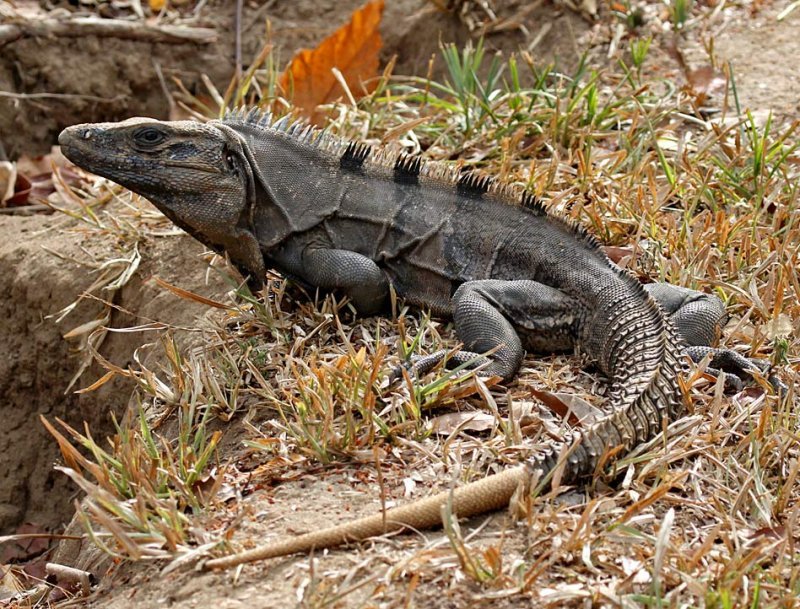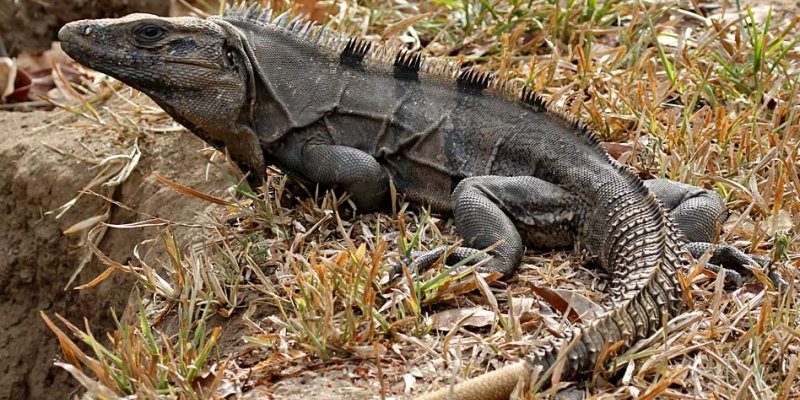
A spiny-tailed iguana, also known as *Ctenosaura*, comes in various species, each boasting its own distinct characteristics. Think of them like a family of cousins—similar enough to be recognized as kin, but unique enough to capture your attention. Whether you’re an aspiring herpetologist, a nature lover, or just someone curious about reptiles, understanding how to identify these iguanas can add a layer of enjoyment to your outdoor adventures.
Physical Characteristics of Spiny-Tailed Iguanas
To start, let’s dive into the physical features of a spiny-tailed iguana. Honestly, their appearance is one of the most fascinating aspects! These iguanas are generally characterized by their spiky tails—hence the name. Their tails are covered in hard, bony spikes that provide both protection and a unique look. If you see an iguana with a tail resembling a medieval weapon, chances are it’s a spiny-tailed iguana.
Moreover, their bodies are usually robust and stocky, with many species showcasing gorgeous colors or patterns. Ranging from gray to green, these iguanas can even present a stunning mix of both. You might spot one with vibrant stripes or spots, each species flaunting its own aesthetic flair. Pay attention to these patterns, as they are vital for identification.
Size Matters
Another important aspect to consider is size. Spiny-tailed iguanas are medium to large reptiles, typically reaching lengths of about 2 to 4 feet, depending on the species. For instance, the black spiny-tailed iguana can grow quite large, while others, like the northern spiny-tailed iguana, might be a bit smaller. If you’re trying to identify one, consider its overall size relative to its environment. Larger iguanas tend to inhabit areas with ample vegetation, while smaller ones might be found in more open spaces.
Behavioral Traits to Observe
You might be wondering how behavior plays into identifying a spiny-tailed iguana. Here’s the thing: their behavior can tell you a lot. These iguanas are known for being territorial. If you spot one basking in the sun and another approaches, prepare for a show! They may display aggressive postures, puffing up their bodies and using their tails for warning. It’s almost like watching a little drama unfold.
In addition, spiny-tailed iguanas are often seen basking in the sun on rocks or branches. They love warmth, and their behavior reflects that. Look for them during the morning sun, where their colors gleam the brightest. This habit of sunbathing is not just for show; it helps them regulate their body temperature and provides the energy they need for the day.
Diving into Diet and Habitat
Their diet can also provide hints about their identity. Spiny-tailed iguanas are primarily herbivorous, munching on leaves, flowers, and fruits. However, they can also consume insects and small animals, especially younger iguanas. Observing what they eat can be a subtle clue. For instance, if you see an iguana hanging out near trees full of fruits, that might just be your spiny-tailed friend!
These iguanas typically thrive in dry, rocky environments with plenty of sun but often retreat to crevices for safety. They can make their homes in various habitats, from savannahs to tropical forests. If you’re hiking in regions like Mexico or Central America, keep an eye on rocky outcrops or sandy areas where they might be sunning themselves.
Color Variations by Species
Did you know that not all spiny-tailed iguanas look the same? Thanks to a variety of species, their colors can vary significantly. For example, the *Ctenosaura pectinata*, or the black spiny-tailed iguana, features a dark coloration that can appear almost shiny in the sunlight. On the flip side, the green spiny-tailed iguana showcases a greener hue with varying shades.
It’s easy to get mesmerized by their colors, but remember, the patterns and colors are key identifiers. Different species might share similar body shapes but have distinct colors that can help you tell them apart. Make it a fun challenge—try to identify the specific type based solely on color!
Comparing Spiny-Tailed Iguanas to Other Iguanas
You might be curious how spiny-tailed iguanas stack up against other types of iguanas. Compared to the more famous green iguana, spiny-tailed iguanas tend to have a more robust body and sharper-looking tails. Green iguanas are generally more popular as pets, while spiny-tails are often found in the wild, living in their natural habitats.
Their distinctive tails also set them apart. While other iguanas may have smoother tails, the spiny-tailed iguana’s is rugged and spiky. If you’re ever in doubt, remember: if it looks like it could slice through thick vegetation or defend itself against predators, it’s likely a spiny-tailed iguana!
Common Misidentifications
Let’s talk about the common mix-ups when trying to identify a spiny-tailed iguana. If you’re new to iguanas, you may mistake them for similar-looking lizards, like the green iguana or even certain types of skinks. One way to avoid this confusion is to focus on the size and shape of the tail.
Green iguanas lack the prominent spikes associated with spiny-tailed iguanas. Their tails are long and slender, more like a whip than a spiked weapon. When you come across a lizard that looks stout with a rugged tail, take a closer look: you might just spot the distinctive spikes that scream “spiny-tail!”
Another potential confusion arises with iguanas from similar regions. Some may spot juveniles of various iguanas and think they’ve found a spiny-tailed iguana simply because of color. Remember, juvenile iguanas can share colors with adults but may lack the full physical characteristics you’d expect.
Identifying a spiny-tailed iguana isn’t just about pointing out a reptile; it’s about discovering a vibrant piece of nature. By paying attention to their unique physical characteristics, behavior, and color variations, you’re not just enhancing your wildlife knowledge—you’re enjoying the journey of exploration. Whether spotting them in the wild or learning about them in captivity, knowing how to identify these stunning creatures adds a fun twist to your adventures.
So, the next time you’re wandering through their habitat, take a moment to appreciate the spiny-tailed iguana. With all its quirks and characteristics, it’s a reminder of the diversity that our planet offers—a true gem of the reptile world!

